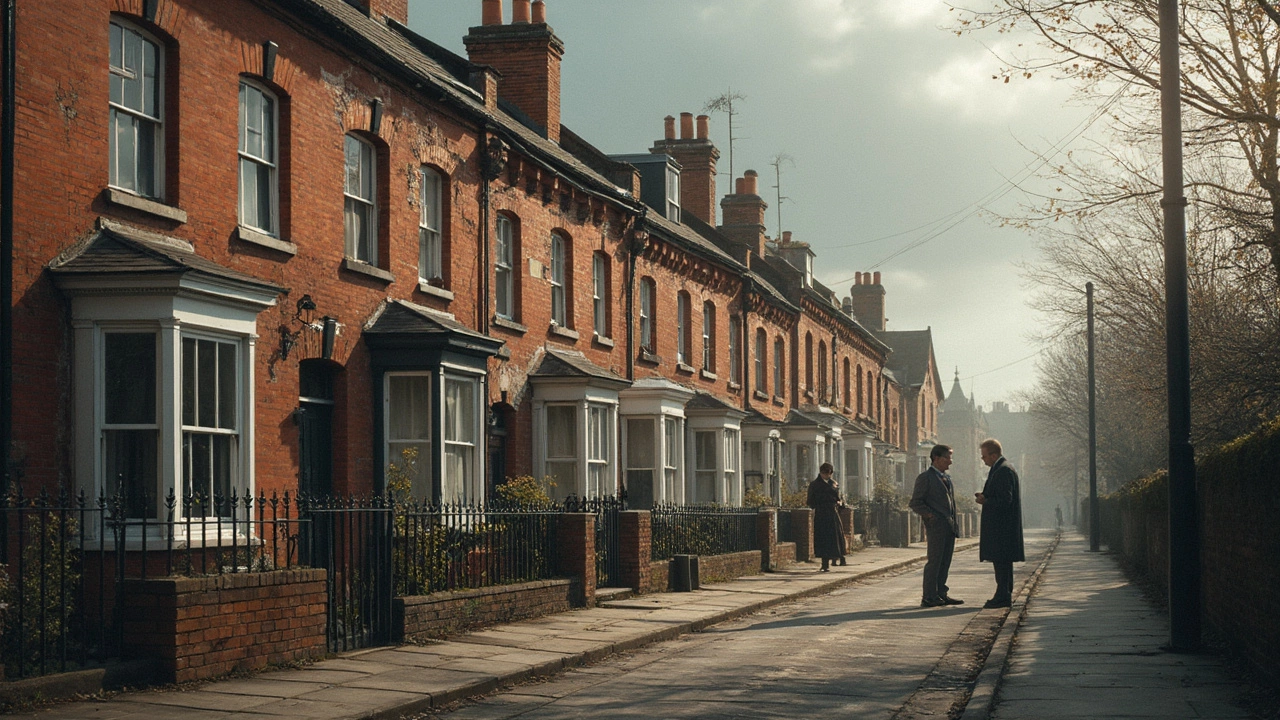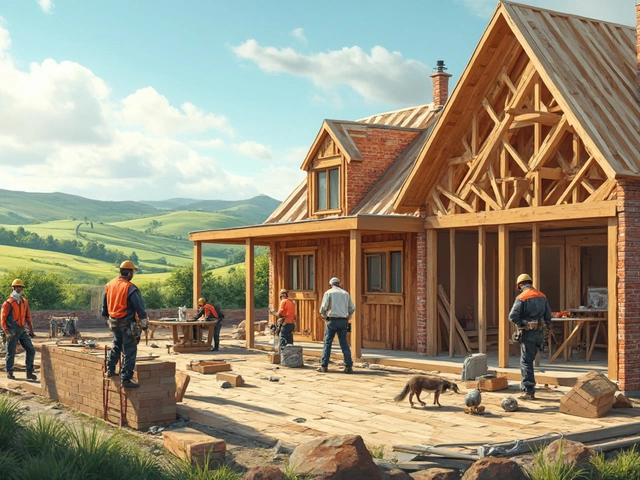Getting to grips with whether insurance covers structural damage can be as complex as untangling a box of old Christmas lights. But don’t fret, we've got your back. Let's crack open those dusty insurance policies and see what's really covered when your home's structural integrity is on the line.
First off, you might be wondering: does my insurance even cover foundation issues? The answer is... it depends. Generally, standard home insurance policies do cover some types of structural damage, but usually only if the damage is caused by a covered peril. What's a covered peril, you ask? Think events like fires, windstorms, or even vandalism. Still, sneaky foundation problems, such as settlement or poor construction, often don’t make the cut.
Now, before throwing your policy out the window, check for additional coverage options. Some insurance companies offer something called 'endorsements' or 'riders' that can extend your policy to cover more than the standard perils. Investing in one of these might save you a significant chunk of change if your foundation decides to throw a tantrum.
- Understanding Insurance Policies
- Common Structural Damage Issues
- Navigating Claims Process
- Tips for Homeowners
Understanding Insurance Policies
You might feel like you're deciphering an ancient scroll when reading your insurance policy, but understanding what's in it can make a huge difference. The primary goal is to determine which types of structural damage your policy covers and under what circumstances.
Insurance policies are like snowflakes—no two are exactly alike. Even within a single insurance company, policies can vary based on your chosen coverage. However, most standard policies share a few common threads:
- Named Perils Coverage: These policies cover specific risks mentioned—such as fire, theft, or hailstorms. If the peril isn't named, it usually isn't covered.
- All-Risk Coverage: Also known as 'open perils,' these policies cover everything except what's explicitly excluded. This is broader but often pricier.
- Optional Endorsements: These are add-ons—think of them like extras on a pizza—that expand your protection, like covering foundation repairs or other structural issues not typically covered.
One interesting fact—did you know that about 25% of home insurance claims relate to wind and hail damage? It highlights how important it is to know your policy’s specifics.
| Peril Type | Standard Coverage |
|---|---|
| Fire | Yes |
| Earthquake | No |
| Flooding | No |
| Theft | Yes |
The devil's really in the details here. Pay attention to the small print and make sure you’re clear on the coverage you have. If you're ever stuck, a quick call to your insurance agent can provide some clarity. Just be sure to have your policy number handy!
Common Structural Damage Issues
So, what kind of structural damage should you be on the lookout for? Let's break it down. One of the main culprits often involves foundation repair needs: think cracks or shifting caused by things like soil movement or faulty construction.
Foundations can settle unevenly over time, resulting in some sections of your house sinking more than others. This could lead to cracks in your walls and ceilings or doors that start sticking and refusing to close properly. Not exactly what you'd call a home improvement.
If you've ever noticed your floors aren't quite as level as they used to be, chances are your foundation is throwing a tantrum. Excessive moisture, like from heavy rainfall or poor drainage, can also wreak havoc by eroding soil and threatening the home's structural spine.
Another villain in the structural damage saga is termite infestation. These tiny critters work silently, munching away at wood structures. Once they've tucked into a section of your home, it can compromise your home's structural integrity, leading to potentially costly repairs.
Lastly, don't underestimate the power of a good ol' fashioned tree root. While they look charming and give shade, larger roots can sometimes disrupt your home's foundation and create cracks as they search for moisture.
Here's an eye-opener: did you know that around 25% of homes in the UK will experience some form of structural issues within their lifetime? That's why being clued up about these potential problems and how they link to your insurance is crucial.
In understanding these issues, you're not just stepping into the role of homeowner, but also the protector of your home. Keeping a keen eye out can prevent minor annoyances from snowballing into major expenses.

Navigating Claims Process
Ah, the claims process—not exactly the part of homeownership anyone looks forward to. But don’t panic, let's break it down so you know exactly what to do if structural damage rears its ugly head.
First thing’s first, grab your insurance policy. You'll want to check if your specific type of structural damage is covered. This can save you a lot of time if your policy doesn't already include the nasty surprise you're dealing with.
Next, call your insurance company as soon as possible. Report the damage and get your claim rolling. They might ask you for the details of what happened—and who better to tell them than you?
Once reported, your insurer will usually send out an adjuster to assess the damage. This is a big moment, so it pays to be prepared. Make sure you have documentation ready: photos of the damage, any repair estimates you’ve got, and a list of any expenses so far.
Here's a neat trick: try to be at home when the adjuster visits. You can walk them through the damage and address any questions on the spot. The more information you provide, the smoother the whole process will go.
The next step is the waiting game. Your insurer will review the adjuster's report and decide on the claim. If approved, you'll get a payout based on your policy terms.
- Review your policy for details about what's covered.
- Contact your insurer to report the damage.
- Document everything with photos and receipts.
- Be available when the adjuster visits.
- Wait for the decision and discuss any issues with the payout.
Remember, persistence is your friend here. If something about the decision seems off, don't hesitate to escalate it.
Tips for Homeowners
Alright, now let's get practical. If you're a homeowner worried about structural damage, there are some things you can do to keep your house in tip-top shape and your insurance related stress to a minimum. Here's the skinny:
1. Regular Inspections: Don't wait for visible cracks or sagging floors to start worrying. Make it a habit to inspect your home's foundation and structure at least once a year. Catching a problem early could save you thousands.
2. Understand Your Policy: Keep a copy of your insurance policy handy. Know exactly what your policy covers when it comes to foundation repair. If you're not sure, give your insurance provider a ring and ask them to clarify.
"The most effective way to ensure your home is protected is by being proactive. Know your policy inside and out and don't be afraid to ask for additional coverage where needed," says Tom Smith, a leading insurance consultant.
3. Maintain Proper Drainage: Poor drainage can lead to water pooling near your foundation. Install gutters and ensure water is directed away from your house. This small step helps prevent erosion and potential foundation issues.
4. Invest in Additional Coverage: Consider an endorsement to cover more than the standard perils. Sure, no one likes to pay more, but it could be less painful than footing the whole bill when disaster strikes.
5. Document Repairs: Always keep records of any foundation repairs or inspections. This helps when you're applying for or renewing insurance. It shows you've been diligent about maintaining your home's structure.
Being proactive rather than reactive helps keep your home safe and potentially saves you money on insurance claims. It's all about staying ahead of the game!





